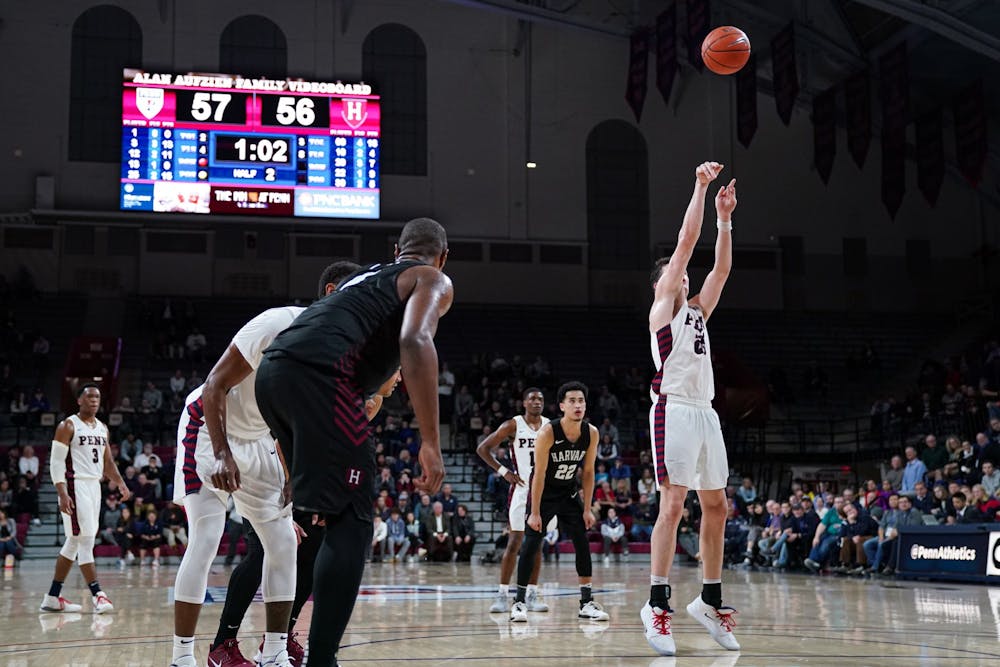Even after a close win over Big 5 rival Temple, the Quakers knew that they had to show up for conference play. It didn't come easy, but Penn (9-7, 1-2 Ivy) delivered: the Red and Blue outlasted Harvard (13-5, 2-1) 75-72 in overtime. Here are a few takeaways from the game.
The Quakers finally made their free throws
Shots from the charity stripe haven't been easy to come by this season for Penn, but the Quakers were collectively solid from the line against the Crimson. Senior forward AJ Brodeur knocked in eight of nine freebies, which marked the second highest free-throw percentage of Brodeur's career when attempting more than five. The Red and Blue sank 18 free throws, which is impressive for a team that has only accomplished that feat seven times in Steve Donahue's tenure.
It will be interesting to see if the Quakers can sustain their success at the free-throw line. In the past three seasons, Penn has only shot above 80% from the line in back-to-back games once. There is a high correlation between free throws made and wins, so Steve Donahue will surely emphasize converting shots from the charity stripe going forward.
Penn's strong defensive play isn't a fluke
Last week, Penn stifled Temple's offense, holding the Owls to a 30.7% shooting clip and just one three-pointer. Yet, it was easy to be skeptical of the Quakers' defensive success against a team that had scored over 80 points just one time this season. Harvard, though, has put up big numbers on offense. The Crimson are second in the Ivy League in true shooting percentage, and they're tied for first in points per possession.

The final scores for both teams are deceptive because the game went to overtime, but the Quakers held Harvard to 36.3% shooting — including 27.78% in the first half. Harvard center Chris Lewis — who is third in the Ivy League in true shooting percentage — went just 7-for-20 from the floor, and no Harvard player shot over 50%. Penn's defensive play is picking up at just the right time.
The Quakers need to figure out how to play without Brodeur on the court
Brodeur is a big part of Penn's offense — for good reason — ranking seventh in the Ivy League in usage percentage. Brodeur played 40 minutes against Harvard, contributing on both ends of the floor. But when Brodeur is on the bench, the Quakers are a different team. When Brodeur's off the court, junior forward Jarrod Simmons and freshman center Max Lorca-Lloyd have stepped into the lineup. Simmons has a negative 4.2 plus-minus rating when he's on the court, while Lorca-Lloyd has a negative 2.9 offensive plus-minus rating this season. In other words, when Brodeur is off the court, the Quakers can get in a hole.
Obviously, the implications of this will be felt next season when Brodeur graduates. Yet, playing more than 35 minutes every game would be physically taxing for anybody. The Quakers can't afford to get down big every time Brodeur goes to the bench. For Steve Donahue, maybe this means rolling out a small lineup or getting Lorca-Lloyd more involved offensively. Regardless, the team's offensive effectiveness without Brodeur is something to monitor as the conference season progresses.









